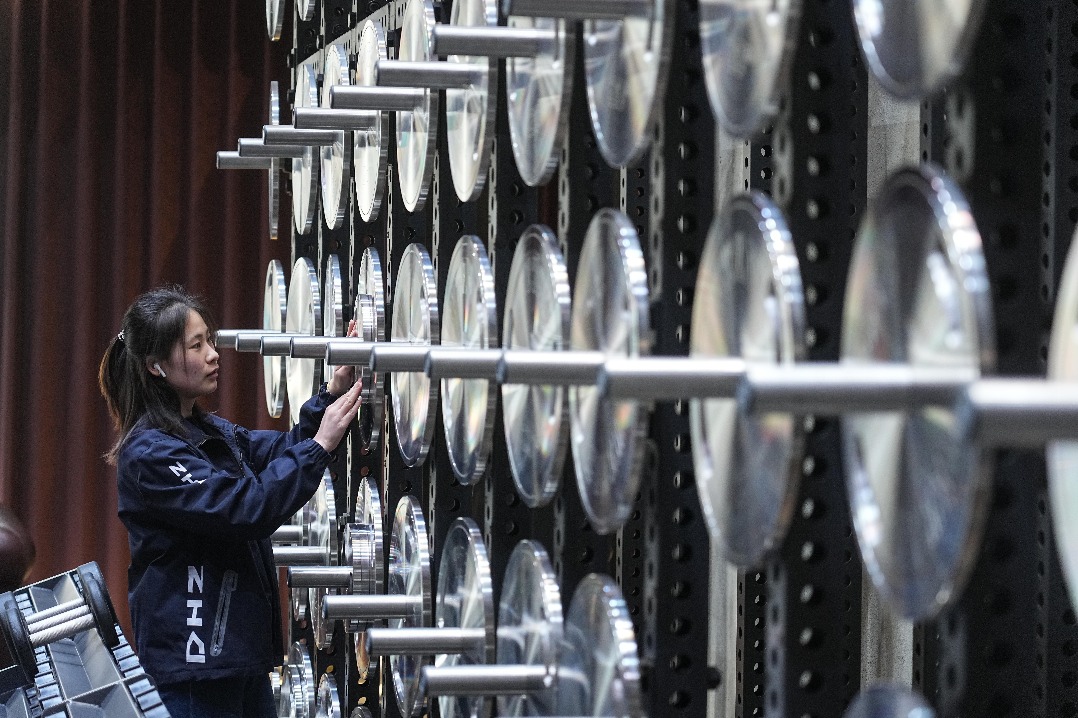Key banks eye 520b yuan via placements
Sector challenged by limited profit growth, narrow net interest margins

China's major State-owned commercial banks plan to raise up to 520 billion yuan ($71.7 billion) via private placements from investors, including the finance ministry, a forward-looking move which analysts said will help forestall financial risks and better support the real economy.
The fundraising aims to replenish core tier-1 capital — the core capital held in a bank's reserves — to help ensure that the financial system has the necessary resilience and lending capacity to support the economy's transition toward innovation and consumption-led growth, they said.
Bank of Communications, Bank of China, Postal Savings Bank of China and China Construction Bank announced plans on Sunday to raise a combined 520 billion yuan through additional offerings through the Shanghai Stock Exchange.
The Ministry of Finance will fully subscribe to the new shares issued by Bank of China and China Construction Bank, while also taking up over 90 percent of the new shares offered by Bank of Communications and Postal Savings Bank of China, committing a total of 500 billion yuan in cash subscriptions.
The banking sector is currently facing challenges of limited profit growth, primarily due to factors such as narrowed net interest margins. This constraint has hindered the capacity to strengthen capital reserves through retained earnings, necessitating external capital infusions, said Lou Feipeng, a researcher at Postal Savings Bank of China.
Amid economic challenges and subdued demand, the sector is increasingly exposed to risks associated with nonperforming loans, highlighting the critical need for enhanced capital buffers to reinforce risk resilience capabilities, Lou said.
The ministry said in a statement on Monday that it will issue the first batch of 500 billion yuan in special government bonds in 2025, with the proceeds earmarked to support the core tier-1 capital replenishment of major State-owned banks.
"The current core tier-1 capital adequacy ratios of State-owned banks are higher than the regulatory bottom line, and their operations are stable," said Ming Ming, chief economist at CITIC Securities.
According to the latest financial data, the core tier-1 capital adequacy ratios for Bank of Communications, Bank of China, China Construction Bank and Postal Savings Bank of China stood at 10.24 percent, 12.2 percent, 14.48 percent and 9.56 percent, respectively, as of the end of last year, well above regulatory minimums of 5 percent.
The bank-specific and market-oriented approach to capital replenishment is a forward-looking strategic arrangement, prioritizing the long-term financial stability and growth of the real economy, Ming said, adding that by leveraging a multiplier effect of eight, the 500-billion-yuan capital injection can potentially catalyze 4 trillion yuan in additional lending capacity.
Since September last year, policymakers have said on various occasions they would issue special government bonds to support the core tier-1 capital replenishment of the country's six State-owned commercial banks — the four aforementioned ones, along with Industrial and Commercial Bank of China and Agricultural Bank of China.
After capital replenishment, Lou said it is expected that these banks will notably boost credit issuance, with a specific focus on channeling additional financial resources toward strategic fields, including tech-focused small and medium-sized enterprises and strategic emerging industries.
Lian Ping, head of the Guangkai Chief Industry Research Institute, said that amid the country's broader efforts to stabilize growth, lenders will not be constrained by capital adequacy ratios or other indicators when it comes to meeting the credit demands of the economy in the years to come.
Ming said, "The enhanced capital strength of these banks will not only strengthen their risk-bearing capacity, but also provide a critical buffer to help resolve the debt risks in the real estate sector and facilitate the transformation of local government financing platforms."
Although minority shareholders may face dilution of earnings per share over the short term, the increase in the banks' capital adequacy ratios will ultimately improve the quality of their returns on equity, coupled with the State-owned banks' stable dividend policies, thereby strengthening the investment safety margin and return expectations for these shareholders, Ming added.
Tan Guoling contributed to this story.





































